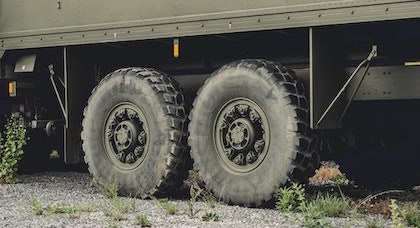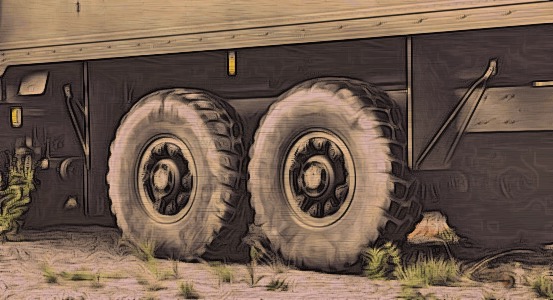
Trucking Priorities
February 11, 2021
The Trucking Business I
February 24, 2021Freight, Tires & Pollution Reduction.

Inflation (The Round Version)
Among other things, the recent severe weather that has disrupted lives across the nation got us thinking about tires.
Picture a movement of freight traveling from, say, Tampa to Tulsa. We take I-75 north to Atlanta, jog west on I-22, and just after we merge onto I-40 outside of Memphis the snow starts falling. By the time we reach Tulsa ⏤ 1,250 miles and 20 hours ago ⏤ we’ve experienced a temperature drop of 45 degrees.
As Fleet Equipment describes it, “colder road surfaces and ambient temperatures impact tire operating pressures,” with seasonal factors compounding natural air leaks: “Add a 20-degree drop in temperature to regular air loss and tire pressures will drop significantly.”
Now add into that scenario the gaining traction of electric vehicles. Aperia Technologies (which has an automatic tire inflator for tractors and trailers), published a a fascinating white paper, “The Drive Toward Electric.” It projects the possibility of one-third of all trucks running on electric power within the next 15 years.
With that cleaner fuel technology, you’d think the pollution level would trend downward.
And there’s the rub. Electric truck cabs pulling trailers weigh more than diesel-powered. And electric vehicles create instant torque from their motors. States the white paper, “What does this mean for tires? Testing has shown that traditional tires can wear out up to 30% faster on electric vehicles.”
Okay, so the tires wear out. Need to be replaced. Just the cost of doing business? Not at all. Tires are made from natural rubber, synthetic rubber, metal, and other compounds. Modern truck tires require about 22 gallons of oil to make.
From the white paper:
“Particulate matter emissions from tire wear particles can be 1,000 times worse for the environment than what comes out of a vehicle’s exhaust.”
That shouldn’t be astonishing, though it is. So, better tire design and better technology. Automatic tire inflation. Redesign of sidewalls to reduce drag. Grip additives for better braking. Treads with narrower sipes, which allows more rubber on the road and a reduction in irregular wear.
From the ground up, transportation is changing.

